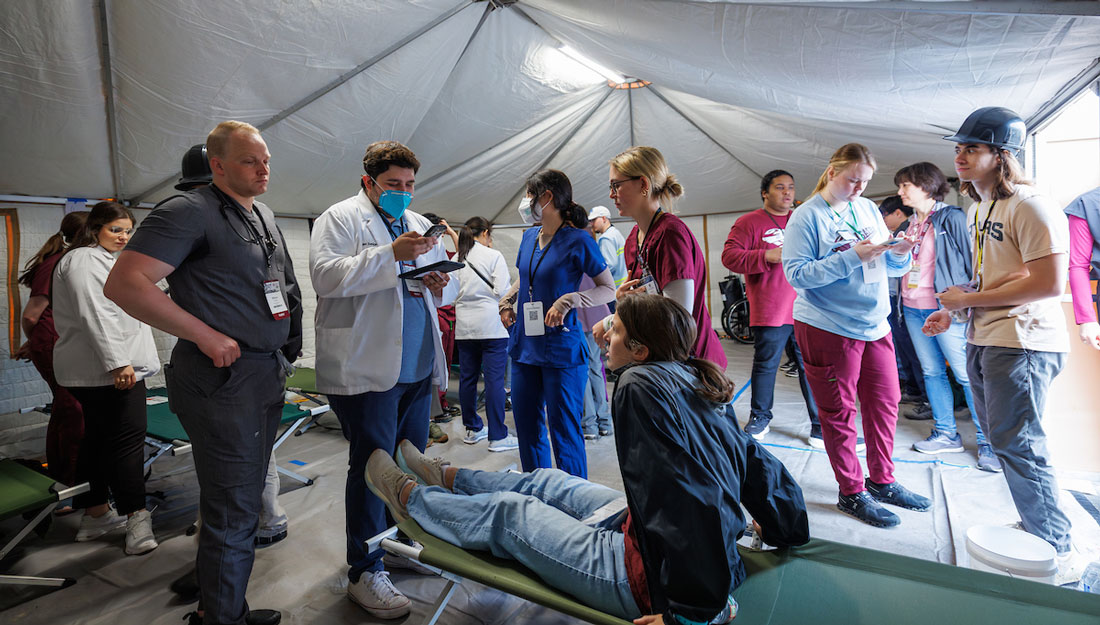IBT researchers discover gene’s complex role in obesity, fatty liver and diabetes
(HOUSTON, TX) — Researchers at the Texas A&M Health Science Center Institute of Biosciences and Technology at Houston have found that a gene in the liver and elsewhere in the body, when inhibited or increased, affects fatty liver and diabetes but does not alleviate both diseases at once.
The study is currently available online in Diabetes and will be in an upcoming issue of the journal of the American Diabetes Association.
“A general drug that inhibits this gene will cure fatty liver disease in the obese while at the same time aggravate high blood lipids, such as cholesterol and cardiovascular disease, and diabetes – even in people who control their caloric intake,” said Wallace McKeehan, Ph.D., director and professor in the Center for Cancer and Stem Cell Biology at the HSC-IBT and senior author. “A drug enhancing this gene’s activity will prevent waistline fat, heart disease and diabetes but aggravate liver disease if you overeat and are obese.”
“Take your choice with a single drug,” continued Dr. McKeehan, recommending reduced caloric intake and increased exercise as best methods to prevent fatty liver and diabetes. “Cure fatty liver disease and increase diabetes, or treat diabetes and aggravate fatty liver if you overeat and do not exercise.”
Interrelated and complex, diabetes, fatty liver disease and metabolic syndrome are increasing thanks to the rising obesity rate in the United States. Fatty liver is a little-known consequence of obesity that is most common in alcoholics. Non-alcoholic fatty liver disease in obese individuals is similar to the alcoholic version, as both result in hepatitis, cirrhosis, liver failure and hepatoma (liver cancer).
The U.S. Centers for Disease Control and Prevention estimate almost two-thirds of Americans are overweight, with a quarter qualifying as obese or “super” obese. Caused by too much caloric intake and too little exercise, obesity in children ages 6-19 has increased to 15 percent in the last decade and 10 percent in ages 2-5. The estimated cost to the U.S. economy is $122.9 billion, and developing countries like China are now seeing obesity rates rise as well.
The obesity epidemic was evident in the movie documentary “Super Size Me” directed by Morgan Spurlock, as his 30-day diet of only high-fat fast food meals resulted in early signs of liver damage.
In their study, Dr. McKeehan and his colleagues found that a liver gene receptor caused fatty liver in obese mice when fed a high-calorie, fat-filled diet designed to simulate chronic obesity in humans. Removing the gene coding for the receptor, called FGFR4, cured the fatty liver despite the mice remaining obese and on a high-fat diet.
However, while the fatty liver was resolved through this approach, the mice exhibited more severe high blood cholesterol, triglycerides and diabetes. Surprisingly, even non-obese mice with a normal body weight, when fed a normal diet, had increased waistline fat, high blood lipids and diabetes when the FGFR4 was removed.
After the HSC-IBT researchers returned this gene in the liver of the deficient mice, they again came down with fatty liver if they continued to overeat and become obese. But, restoration of the missing gene only in the liver – not other tissues – did not prevent the increase in waistline fat and diabetes in normal non-obese mice.
FGFR4 in the liver helps temporarily store fat in the organ during “fat” times. The stored fat then disappears during “lean” times, as it is used for energy and muscle mass. FGFR4 in other tissues, such as muscle, keeps sugar from becoming too high in the blood, a hallmark sign of diabetes.
Obesity from overeating high-fat foods constantly stimulates liver FGFR4, overloading the organ’s ability to keep fat for only transient storage. Continual storage taxes the liver and interferes with its other functions, resulting in liver disease.
Obesity also constantly stimulates FGFR4 at other places in the body trying to lower blood sugar. The overload from constant fat times, combined with the liver’s inability to store more fat, leads to chronic high blood cholesterol and high levels of lipids and sugar, finally resulting in Type II diabetes.
This study indicates the efficient use of FGFR4 in different organs in seemingly opposite mechanisms, Dr. McKeehan said, with a net effect of benefiting a person’s overall health under fluctuating dietary conditions ranging from lean to fat.
“These research findings are a general lesson in the challenges of rational drug design intended to relieve specific symptoms of complicated syndromes such as metabolic syndrome and cancer,” Dr. McKeehan said.
“Anyone who has had severe side effects from a drug understands the principle. Perhaps someday we can find a combined magic bullet cocktail that will inhibit this liver gene and still cure fatty liver while stimulating this gene at other sites in the body to cure heart disease and diabetes.”
Other contributors to the Diabetes study from the HSC-IBT Center for Cancer and Stem Cell Biology were Fen Wang, Ph.D., associate professor; Chengliu Jin, Ph.D., assistant research scientist; Yongde Luo, Ph.D., assistant research scientist; Xinqiang Huang, student; and Chaofeng Yang, graduate research assistant.
Research was supported by the National Institute of Digestive and Kidney Diseases, the National Cancer Institute, and the J.S. Dunn Foundation.
The Texas A&M Health Science Center provides the state with health education, outreach and research. Its six components located in communities throughout Texas are Baylor College of Dentistry, the College of Medicine, the Graduate School of Biomedical Sciences, the Institute of Biosciences and Technology, the Irma Lerma Rangel College of Pharmacy, and the School of Rural Public Health.
Media contact: media@tamu.edu


